A) Acetic acid
B) Ethanol
C) Phenol
D) Acetone
E) Water
G) A) and D)
Correct Answer

verified
Correct Answer
verified
Multiple Choice
What is the expected product,A,of the following reaction sequence? 
A) Benzyl formate
B) Phenylacetic acid
C) Benzenesulfonic acid
D) 1-Chloro-1-phenyl acetic acid
E) Dibenzylketone
G) A) and C)
Correct Answer

verified
Correct Answer
verified
Multiple Choice
Predict the major organic product of the reaction sequence, 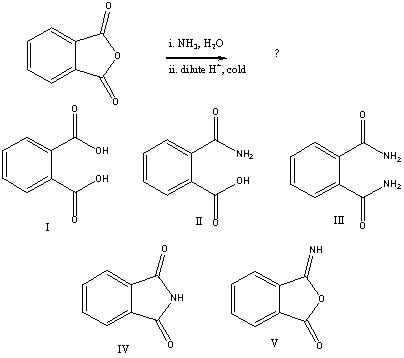
A) I
B) II
C) III
D) IV
E) V
G) C) and E)
Correct Answer

verified
Correct Answer
verified
Multiple Choice
What would be the final organic product of the following reaction? 
A) ![]()
B) C6H5CH3
C) C6H5COOCH2CH2OH
D) C6H5CHO
E) C6H5CH2OH
G) A) and B)
Correct Answer

verified
Correct Answer
verified
Multiple Choice
What would be the final organic product of the following reaction? 
A) 2,2-Dimethylpropanoic acid
B) Methyl 2,2-dimethylpropanoate
C) 2,2-Dimethyl-1-propanol
D) t-Butyl methyl ether
E) 3,3-Dimethyl-2-butanone
G) D) and E)
Correct Answer

verified
Correct Answer
verified
Multiple Choice
What is the final product of this sequence of reactions? 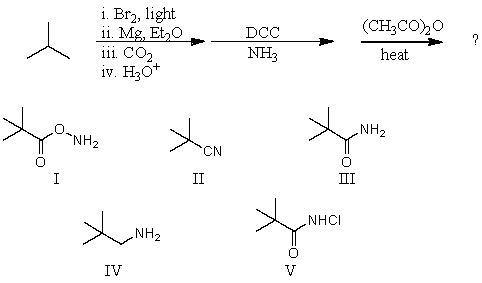
A) I
B) II
C) III
D) IV
E) V
G) C) and D)
Correct Answer

verified
Correct Answer
verified
Multiple Choice
What would be the final product? 
A) C6H5CH2CO2CH3
B) C6H5CH2CH2NHCH3
C) C6H5CH2COCH3
D) C6H5CH2CH(CH3) CN
E) C6H5CH2CH=NCH3
G) A) and E)
Correct Answer

verified
Correct Answer
verified
Multiple Choice
Which compound would be the weakest acid?
A) 4,4-dichlorobutanoic acid
B) 3,4-dichlorobutanoic acid
C) 3,3-dichlorobutanoic acid
D) 2,3-dichlorobutanoic acid
E) 2,2-dichlorobutanoic acid
G) A) and E)
Correct Answer

verified
Correct Answer
verified
Essay
Carbonation of a Grignard reagent or the SN2 displacement of an organic halide with cyanide ion followed hydrolysis are both good methods for the conversion of organic halides to carboxylic acids of one more carbon atom.For the following reaction,which of these two procedures would be the process of choice and why? 
Correct Answer

verified
Both methods would work equall...View Answer
Show Answer
Correct Answer
verified
View Answer
Multiple Choice
Identify the product(s) of the following reaction. 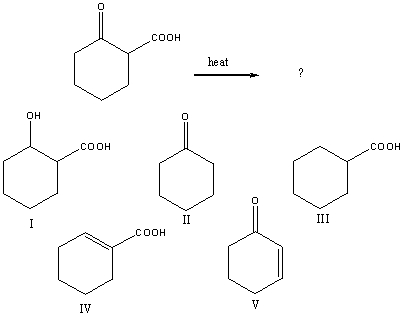
A) I
B) II
C) III
D) IV
E) V
G) B) and C)
Correct Answer

verified
Correct Answer
verified
Multiple Choice
Which of the following reactions could be used to synthesize ethyl acetate?
A) CH3CH2OH + (CH3CO) 2O + pyridine
B) CH3CH2OH + (CH3CO) 2O
C) CH3CH2OH + CH3CO2H + H3O+
D) Two of these choices.
E) All of these choices.
G) C) and E)
Correct Answer

verified
Correct Answer
verified
Multiple Choice
What would be the final product,F,of the following sequence of reactions? 
A) 1-Bromo-2-methyl propane
B) 3-Bromo-3-methylbutanoic acid
C) Butanoic acid
D) 3-Methylbutanoic acid
E) Methyl 2-methylproanoate
G) A) and D)
Correct Answer

verified
Correct Answer
verified
Multiple Choice
Which of these compounds could not be formed by nucleophilic attack by an appropriate reagent on acetyl chloride?
A) CH3CONH2
B) CH3CO2CH2CH3
C) ClCH2COCl
D) CH3CO2H
E) (CH3CO) 2O
G) B) and E)
Correct Answer

verified
Correct Answer
verified
Multiple Choice
Which of the following statements concerning nitriles is incorrect?
A) Nitriles can be hydrolyzed to carboxylic acids.
B) Nitriles can be formed from (many) alkyl halides by nucleophilic substitution by cyanide ion.
C) Nitriles can be reduced with excess lithium aluminum hydride to primary amines,RNH2.
D) Nitriles react with Grignard reagents to form tertiary alcohols.
E) Nitriles can be made by the dehydration of amides.
G) A) and E)
Correct Answer

verified
Correct Answer
verified
Short Answer
The presence of electron-withdrawing substituents close to the carboxylic acid functional group will ___ the acidity of the molecule by ___.
Correct Answer

verified
Correct Answer
verified
Multiple Choice
The correct structure for ethyl 3-methylbutanoate is: 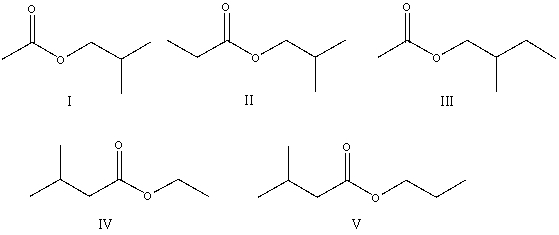
A) I
B) II
C) III
D) IV
E) V
G) A) and C)
Correct Answer

verified
Correct Answer
verified
Multiple Choice
What would be the final organic product of the following reaction? 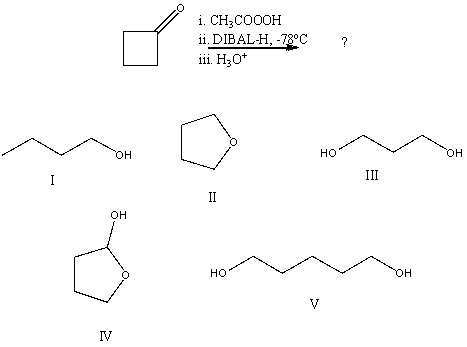
A) I
B) II
C) III
D) IV
E) V
G) B) and D)
Correct Answer

verified
Correct Answer
verified
Multiple Choice
What would be the final organic product of the following reaction? 
A) C6H5CO2H
B) C6H5CH2CH2NCH3
C) C6H5CH2CH2CN
D) C6H5CH=NCH3
E) C6H5CH2NCH3
G) D) and E)
Correct Answer

verified
Correct Answer
verified
Multiple Choice
Which of the following would be the weakest acid? 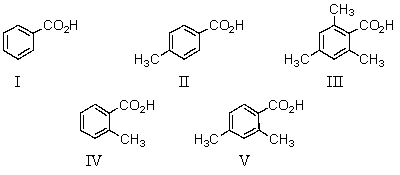
A) I
B) II
C) III
D) IV
E) V
G) A) and D)
Correct Answer

verified
Correct Answer
verified
Multiple Choice
What would be the product of the following reaction? 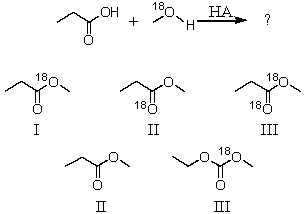 \
\
A) I
B) II
C) III
D) IV
E) V
G) A) and E)
Correct Answer

verified
Correct Answer
verified
Showing 121 - 140 of 213
Related Exams